How to keep fit in your fifties.
2 CommentsAre you fit enough at fifty?
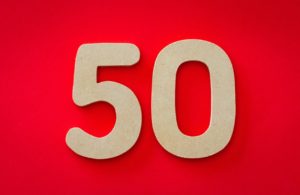
The Covid-19 pandemic has focused minds acutely on risk factors that either prolong the illness or cause victims to suffer worse symptoms.
Obesity, age, underlying health problems and ethnic background are four of these risk factors. We cannot alter two of these, but we can do something about the other two.
Whether you just want to be healthier or you want to reduce your risk of suffering badly from Covid-19 (and many other health-related problems such as diabetes or heart disease) then read on.
If jogging puts the fear of the Gods into you, don’t worry, the advice that follows contains NO JOGGING and NO LYCRA!
Thomas Cureton (The Godfather of Physical Education in the USA) came up with a series of fitness tests that can be done at home. Here are 3 of them in this video. Don’t be frightened, try them out.
Why strength is important
Strength and mobility are two components of fitness that are often neglected by fifty-year-olds who are trying to get fit. Daily life for many requires no feats of strength, our modern post-industrial, post-agrarian society has removed them all, except for unscrewing the lid off a jar of pickled onions.
As you will have found from failing those 3 tests that are designed to represent normal health not elite-athlete status, your strength is lacking.
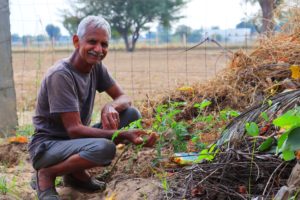
Of course, you can avoid all efforts to measure and be tested (there are no pull-up bars on Strava) but that doesn’t help you as you get older and one day you can’t pick up your grandchildren. Or you strain a muscle doing gardening or digging a sandpit on the beach.
The type of strength that is important for health is demonstrated by Andy Stone (58-years old in this video) doing this mini-workout. The ability to get up and down off the floor with control, pushing up and balancing with both upper and lower body can be done with no equipment.
(Andy has 50 of these videos on his channel. If you did 1 a day during the week, that is 10 weeks of exercise without repetition).
As you can hear from his breathing, just doing different movements continuously does work your heart and lungs: blood is required by the muscles, waste products are transported away, so the heart beats faster. Oxygen is required to keep doing the work and so you have to breath faster.
Kenneth Cooper, the founder of aerobics (He of the Cooper Test:12-min run) and 1.5-mile run test) told Vern Gambetta in the back of a taxi on the way back from a conference that ‘After 40, strength is more important to work on.’
Tip 1: Do a mini-workout every day for 10 minutes. Frequency is better than the intensity at the beginning.
Why mobility is important
As you may discover trying to tie your shoelaces in the morning, it’s not only your paunch that stops you from doing it in standing, it’s your stiff body. Too much time sat at a desk or in a car or binge-watching Netflix series leads to your joints becoming stiff.
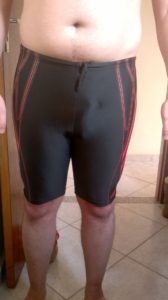
Like strength, you don’t know mobility is missing because you don’t have to touch your toes when sat on your Peloton bike for hours. You just notice it when you get off and have to waddle to the sofa to undo your cycling shoes.
If you exercise in a limited range of motion your joints will gradually become accustomed to moving less. That is one of the main reasons why using machines in the gym or just cycling or just running for your exercise is problematic.
It is very difficult to stretch your way out of a lifetime of bad posture: a 2-minute calf stretch after jogging at 9-minute-mile pace for an hour will not solve the problem. Instead, try to exercise through many different ranges of motion in every exercise session.
An example is a lunge. In this video (I was a 50-year-old man when filmed) I show some different lunge sequences. The medicine ball is not heavy, it just helps remind me of my posture.
Tip 2: Exercise through many ranges of motion in many different directions.
Why skill is important
Some people just like the grind. For whatever reason, they do the exercise equivalent of wearing a hair shirt and flogging themselves with birch twigs. ‘I don’t care what I do, as long as I get tired and sweaty.’ Their self-esteem is linked to doing ‘more.’
Good for them. I doubt if that is a sustainable attitude for the long term. Your body does not need to be ‘punished’ for your unhealthy lifestyle. That is a way to get injured or be miserable or boring: have you ever met someone who does Triathlon?
By doing exercise that has a skill or learning element in it you can look forward to the session rather than dread it. This is why activities such as climbing, yoga, surfing and dance are popular (as well as their social interactions). The process of learning keeps me hungry to train: I never get bored.
A parent of an athlete I train said that ‘gym training is boring.’ He has tried to relieve the boredom by buying ever more pieces of equipment. But, no amount of sandbags, kettlebells and Bulgarian Goat Bags (yes, that is a thing) can make a dull exercise programme come to life.
Weightlifting is a sport that requires strength, mobility, skill as well as speed and coordination. In this video, you can see Marius Hardiman (50-years-old when filmed) doing the snatch. He is only using a lighter weight to demonstrate but you can see how well he moves.
I am not saying that everyone in their fifties should come to our weightlifting clubs (although they would be welcome). I am saying that everyone in their fifties would benefit from finding an activity that helps them develop and maintain their strength, mobility and requires some skill or learning.
Tip 3: Find an activity that has a learning component.
Summary
As you can see from the videos of us three men in our fifties, you don’t have to become a Strava-bore or a couch potato with a Dad-bod. You can do creative and fun exercise at home or with others and move well into your fifties. This will give you the fitness to play with your children or grandchildren and be active into your 60s.
- For those readers in Oxfordshire, Marius runs a series of classes for the over-fifties called Well Fit.
- Anyone over 50 in Devon who wants to follow an athletic development programme, please contact James Marshall at James@excelsiorgroup.co.uk
- N.B. No exercise programme will help you escape a bad diet, so watch this video for ideas on eating sensibly.


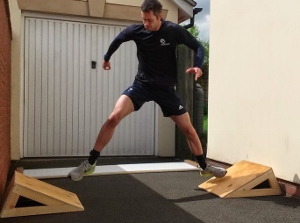 Over the past few years, we have published many guides on sports fitness; based on both research and our extensive coaching experience. Our athletes have benefitted from the principles and systems that we have developed.
Over the past few years, we have published many guides on sports fitness; based on both research and our extensive coaching experience. Our athletes have benefitted from the principles and systems that we have developed. Archery:
Archery:  Handball:
Handball: 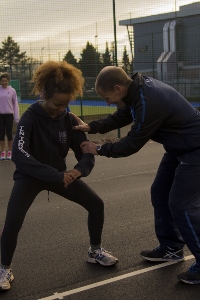 Running:
Running: 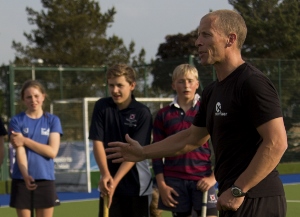 If you would like to get fit for your sport safely and effectively and have some fun on the way, then I am happy to help.
If you would like to get fit for your sport safely and effectively and have some fun on the way, then I am happy to help.



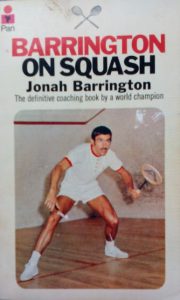
 One of the buzz catchphrases for the last year has been “athlete empowerment” when dealing with young athletes. The young athletes (a loose term, most of them are recreational games players)are supposed to be able to choose what type of training programme they follow, and even give feedback on it.
One of the buzz catchphrases for the last year has been “athlete empowerment” when dealing with young athletes. The young athletes (a loose term, most of them are recreational games players)are supposed to be able to choose what type of training programme they follow, and even give feedback on it.